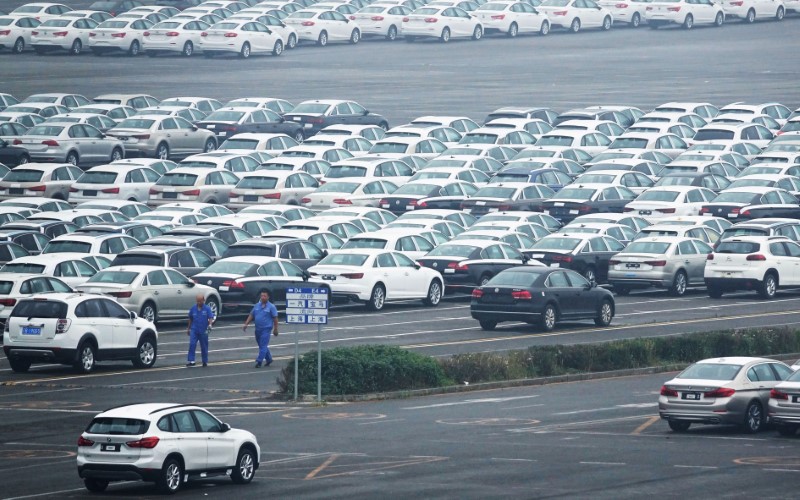 © Reuters. Newly manufactured cars are seen at the automobile terminal in the port of Dalian, Liaoning
© Reuters. Newly manufactured cars are seen at the automobile terminal in the port of Dalian, LiaoningBEIJING (Reuters) – China’s factory-gate inflation slowed for the fourth month in October amid cooling domestic demand for raw materials and ebbing manufacturing activity, underscoring rising economic pressure in the face of simmering trade frictions with the United States.
The consumer price index (CPI), meanwhile, remained steady in October from the previous month with food prices stable, official data from National Bureau of Statistics (NBS) showed on Friday.
The producer price index (PPI), a measure of the prices businesses receive for their goods and services, rose 3.3 percent in October from a year earlier, easing from 3.6 percent in September, the statistics bureau said.
Analysts polled by Reuters had expected the October producer price inflation rate – also used by economists as a rough gauge of industrial profit trends – would ease to 3.3 percent. On a month-to-month basis, the PPI increased 0.4 percent.
Economic momentum in China has been softening in the past months. President Xi Jinping said last week that the world’s second-largest economy is facing “growing downward pressure.”
Underlying factory-gate inflation in recent months has been crimped by easing consumption, with China’s fixed-asset investment growth hovering around record lows and industrial firms’ profits falling since May.
Beijing’s clamp-down on financial risks had also slowed credit demand somewhat, while some mid-sized companies have struggled to pass on higher prices to consumers.
Private and official factory surveys have shown worrying months-long downturn on export orders, suggesting Beijing’s intensifying trade dispute with the United States is starting to put a strain on businesses.
Government data on exports, however, has shown remarkable strength, likely due to shippers rushing to beat higher U.S. tariffs on Chinese goods due to come into effect at the start of next year.
The rising headwinds to growth have prompted Beijing to ramp up stimulus measures to spur domestic demand.
China vowed to lower import tariffs and further broaden market access during the week-long China International Import Expo on Monday.
Policymakers have also committed to boosting infrastructure investment in “weak areas” such as railways, highways and airports.
Raw material prices increased 6.7 percent in October from a year earlier, down from a 7.3 percent gain in September.
The consumer price index (CPI) rose 2.5 percent in October from a year earlier, same as September’s rate and analysts’ forecast.
On a monthly basis, the CPI rose 0.2 percent.
China has set its consumer inflation goal at 3 percent for 2018, same as last year.
The state planner recently said there is no sign of accelerating consumer inflation and expected prices to remain within a reasonable range.
Fusion Media or anyone involved with Fusion Media will not accept any liability for loss or damage as a result of reliance on the information including data, quotes, charts and buy/sell signals contained within this website. Please be fully informed regarding the risks and costs associated with trading the financial markets, it is one of the riskiest investment forms possible.
Source: Investing.com



























